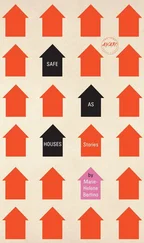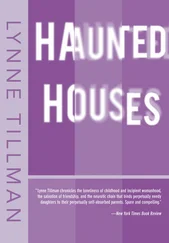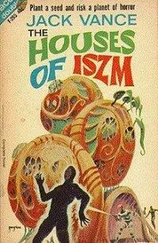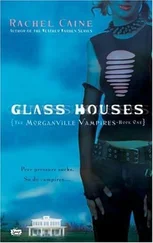BORISLAV PEKIĆ (1930–1992) was born in Montenegro and educated in Belgrade, where he was arrested in 1948 for his founding role in the Association of Democratic Youth of Yugoslavia and sentenced to fifteen years of hard labor. Though he contracted tuberculosis during the five years of the term he eventually served, he was able during this period to draft extensive outlines for future writings, including the family tree of the protagonist of Houses . After studying psychology at the University of Belgrade, Pekić worked as a screenwriter, collaborating on more than twenty scripts, among them The Fourteenth Day , which represented Yugoslavia at the 1961 Cannes Film Festival. His first novel, The Time of Miracles , was published in 1965. In 1970, Houses won the prestigious NIN Award for best Serbian novel, and Pekić managed to obtain a passport and emigrate to London. Living as an expatriate he continued to write novels and advocate for democratic reform. In all, Pekić would write more than thirty works of fiction and nonfiction and saw some two dozen of his plays produced for the stage. Among his notable works are Kako upokojiti Vampira (translated into English as How to Quiet a Vampire , 1977) and the seven-volume saga of the Negovan family, Zlatno Runo (The Golden Fleece , 1978–1986). Following the collapse of Communism, he returned periodically to Serbia, finally helping to form the new Serbian Democratic Party in 1990 and clashing with security forces at an anti-Milošević rally in 1991. The next year he died of lung cancer in London.
BERNARD JOHNSON (1933–2003) was affiliated with the Language Centre at the London School of Economics for many years. In 1970 he edited and translated the first anthology of modern Yugoslav literature, and throughout his career he distinguished himself as one of the most active translators of Serbo-Croatian poetry and prose working in English. In addition to Houses , NYRB Classics publishes Johnson’s translation of Aleksandar Tišma’s The Use of Man .
BARRY SCHWABSKY is the art critic for The Nation and an editor at Artforum . His books include The Perpetual Guest: Art in the Unfinished Present and Words for Art: Criticism, History, Theory, Practice and several poetry collections, most recently Trembling Hand Equilibrium .
The essence of the novel, if one dare speak of such a thing, lies in the disparity between a protagonist’s understanding of his situation (and, at least implicitly, himself) and the way things truly are — between illusion and reality: Don Quixote . The eighteenth century articulated this disparity through the novel of education; the nineteenth century through the novel of disillusion. The inherent kinship between the two becomes clear in the very title of Flaubert’s Sentimental Education . By the mid-twentieth century, however, that disparity took a quite different form in what could be called the novel of mania, in which the protagonist clings so strongly to his illusion that he never sees through it. La Jalousie and Lolita are only among the first to come to mind.
Substitute apartment buildings for nymphets — as strange as that may sound — and you might get something like Houses , the remarkable work by Borislav Pekić which has previously been published in English as The Houses of Belgrade and whose Serbian title would be rendered as The Pilgrimage of Arsénie Negovan . It’s easy to see why the original title never made the passage into English: It’s odd to think of Arsénie’s life as a pilgrimage, since he does not willingly go in search of anything, preferring to stay home, immured with his illusions. The book was the second novel by Pekić, one of the leading Yugoslavian writers of his generation, and no doubt one of the most imaginative and versatile, loath to repeat himself in either form or subject matter: Houses was preceded by The Time of Miracles , a parodic historical novel about Christ and his disciples allegorizing what Pekić would call “Communist Messianism,” while among its successors, still unavailable in English, are works set in a Heathrow Airport overrun by an epidemic of rabies, on the lost continent of Atlantis, and in a postapocalyptic Siberia in which the last human survives in a world of robots. Also untranslated is The Golden Fleece , a seven-novel cycle chronicling the history of the Negovan family over the centuries. Pekić was also active as a screenwriter and playwright.
Withdrawing from the world with nearly as much gusto as Cervantes’s hero plunged into it, Arsénie Negovan is a man whose mind has been unsettled, not by books, but by real estate — by houses. A prosperous bourgeois landlord, a rentier, he should have no illusions about how to succeed in his profession — certainly not by being sentimental about architecture. And, making his first real estate purchases in 1924, Arsénie has entered the market when speculation was rampant. Belgrade between the world wars was undergoing breakneck expansion. As the architectural historian Ljiljana Blagojević explains, in those years the city
was transformed from a provincial Balkan center into what could be seen as a modern European capital of the 1930s. Its population and the city’s built-up area almost quadrupled, with the population increasing by an average of more than 10,000 people per year…. With no legal provisions for separate ownership of individual flats, landlords ruled over the feverishly growing rental property market.
Arsénie has profited from these developments, and handsomely, but he does not consider himself a profiteer. In his own eyes, he is a special kind, a higher kind, of developer and landlord — not the sort who buys buildings just to squeeze as much rent as possible from his tenants, then demolishes them so they can be replaced with new ones better calculated to extract the most value. He deplores such men who are, he says, “so alienated from their own possessions that, since no direct or personal link binds them, they can no longer possess at all in the popular sense of the word.” He wants to preserve and beautify his houses, constantly deepening his bond with them. He has toward his property what might be called a romantic rather than an “abstract and anonymous,” realistic, and economically rational attitude: “I never allowed myself to sink to the mere taking of profits with the same coldly calculating approach as do the present-day owners” of most housing — though he often shows himself as canny a profit-taker as any of them. According to Arsénie, a landlord should not merely possess his buildings; he should equally be possessed by them: a mutuality, even a sort of mystic marriage, “a spiritual [relationship] of the purest kind.” No wonder that Arsénie gives all his buildings women’s names — Sophia, Eugénie, Irina, Xenia, Eudoxia… And more than just names: he sees in them “faces… varied, personal, unexpected,” and intuits their personalities — for instance, “the uninhibited, not to say lascivious, Theodora.” Among the favorites in his harem is “the lovely Greek Simonida with her fine, dark countenance, her milky complexion beneath deep blue eyelids, and her full-blooded lips pierced by a bronze chain, African style.” One thinks of the seductively feminine names of the cities that Marco Polo would describe to Kublai Khan in Italo Calvino’s Invisible Cities , published two years after Pekić’s novel.
The entire novel takes place — at least at one level — in the house to which Arsénie has retreated, indeed in the room where he writes.
Читать дальше












